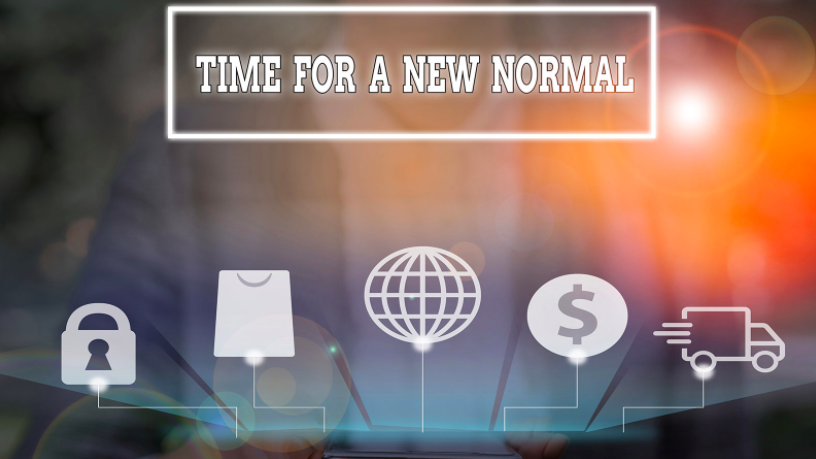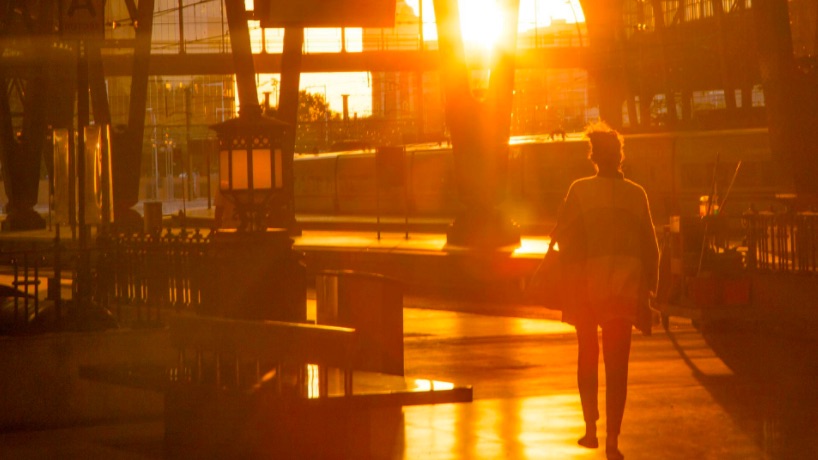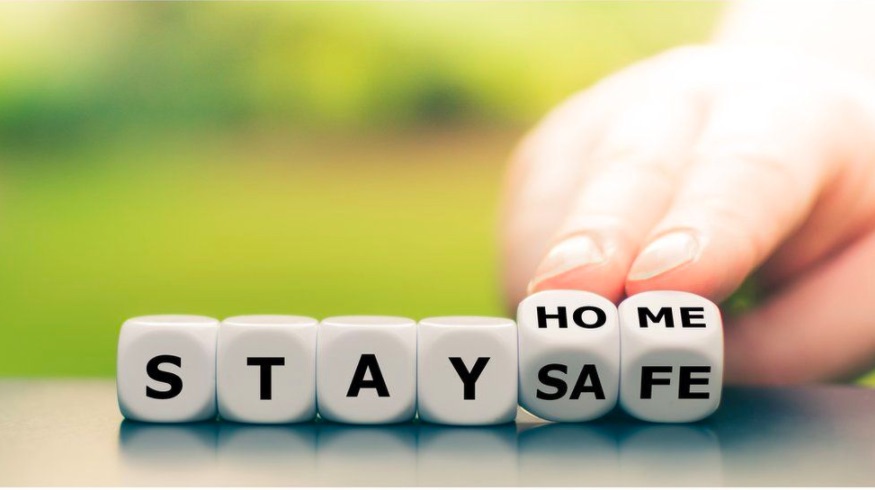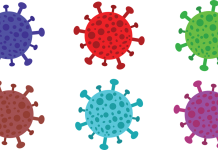How will the world look like post-Covid?
As the world steps into the sixth month of the Coronavirus pandemic, the question being asked is when will we get back to normal life. So, what is normal life? Probably it is a reference to pre-COVID times when we threw caution to the wind, wrapped ourselves in luxury, cared two hoots for nature, travelled at will and partied late into the night. Junk food was our normal ‘diet’, we did not know our neighbours, sometimes even our kids!
Well, that life will, thankfully, not reboot itself for a long long time. Covid-19 has not only given us a universal jolt rocking lives, societies and economies and even the way we think, it has also triggered a tsunami, the ripples of which will continue lashing at us.

All we can do is to adjust to the new normal; well, that is the new buzz word; New Normal. We will have to learn to live with COVID; the world will be a new place for many of us and we will be able to adjust to this new normal, thanks to human ingenuity.
The new normal has led us to renew our love and appreciation for family life, home-prepared food, health & wellness, the local community and even nature and the good earth. Around this will revolve new ideas, new markets and new enterprises. And, of course, new economies.
The New World will have a new look. As Sunder Pichai, CEO of Alphabet said: It’s now clear that once the emergency is past, the world will not look the same. But many parts of the economy are able to continue with some semblance of normalcy. Thanks to advances in remote work, online shopping, delivery options, home entertainment and telemedicine. At the same time, newer technologies like AI, Bluetooth exposure notifications and 3D printing are being used to help fight the disease head-on.

Let us examine some of the contours of the new world:
Jobs: The pandemic has knocked many out from their jobs and comfort zones. Jobs would be absolutely necessary and for this, many will have to learn to re-skill themselves, adapt and innovate. For example, the hordes of Gulf returnees in Kerala have taken to agriculture, ploughing, home delivery of grocery and food etc.
But those getting back to work will face a new reality as job profiles would be re-evaluated and rejigged. Companies may opt for sharing employee skills.
Experts say many traditional jobs may cease to exist in the new normal. New professions and new forms of jobs will emerge in the new vacuum.
The huge devastation caused by COVID across economies globally has led to massive job losses. Once booming sectors like travel and tourism, retail, hospitality, food, media and entertainment, have been hit hard. The massive disruption has raised doubts about the viability of certain jobs in the post-COVID world.
There would be fewer jobs in certain roles. The job profile will also change in certain roles. In India, logistics, customer service and sales shall continue to be the top three job roles by volume even five years from now.

There would be increased demand for digital skill sets in both existing and new job roles in the new world as more people would become digitally literate. Demands too would change rapidly. From real estate to wages or workforce, temporary shall become the new permanent.
According to a report by industry lobby group Ficci, new skills will be required to navigate the jobs landscape. 3D printing, artificial intelligence-driven machines, and machine learning will also be in demand. “In fact, artificial intelligence (AI) will be integral to the future of work. These changes in the sector would require a comprehensive effort to re-skill and upskill the existing workforce as well as the new recruits,” the report said.
The new normal would also require a massive reorientation in school and college curricula. The Ficci report says coding, creative digital programming (creating videos, digital content), data analytics and cybersecurity courses need to be introduced in schools. In short, India should be ready to create a workforce that can navigate the digital world.
Work Place: Increasingly, work would move from posh, glass-wrapped tech parks to homes. In the early days of the pandemic, Work From Home (WFM) was seen as a stop-gap arrangement. But with the arrangement working well, companies have started adopting the WFH system as the new norm. Many companies have started vacating high-rented office space and allowing employees to work from their villages or home towns. Home is not only where the heart is, but also where work is.
But the economies dependent on such tech parks have collapsed. Security staff, cabs, cafeteria employees, high-end restaurants that sprung up servicing the tastes of techies have all gone for a toss.
Some do not believe that WFH may become a new norm and that face-to-face interaction will make a comeback. Not wanting to take a chance, these techies have vacated their flats and moved out to their native towns in order to save on fancy rents. This has led to a new business. Gyms, mid-sized hotels that ran out of business and other such spaces have become the new ‘warehouses’ to store the household goods of techies who expect to come back one day in the future.
WFH will obviously trigger a crisis as many of the tech parks were built with huge investments and loans.
WFH will obviously trigger a crisis as many of the tech parks were built with huge investments and loans. As companies move out, investors in these parks would see their earnings dwindling and find it difficult to service the huge loans they may have taken.

The challenge will be to put the vacant office spaces to new use.
WFH will also trigger digital dependence and sharing bandwidth in rural areas and villages would be a challenge.
Those who have their dwelling units in sleepless metros and towns may find it difficult to adjust to the boring environment of a flat. A business has started booming here too. Resorts that were forced to shut down have not become ‘Workation’ where techies can work and vacation amidst nature, swimming pools and fresh, crisp air.
Some companies have opted for a blended model – predominantly WFH with once-in-a-month face-to-face meetings.
If WFH becomes the new norm, daily commutes would drastically reduce and the tech corridors would hopefully see less of traffic jams. Employees would be less stressed.
But WFH has a flip side too. Employees have already started complaining that they are being forced to put in extra hour on the laptop. More work and projects are being pushed from board rooms to homes. But some companies have started thinking of evolving a new working hour culture and environment rather than pushing employees late into the night and upsetting their work-home balance.

Companies are also toying with paying the employees according to the place from where they work. Workers may have more autonomy, though debatable. There will be fewer excuses for making women drop out of the workplace.
Education: Schools and colleges have already moved online. Teachers dispensing lessons through mobile phones or TV have become the new norm. But unlike WFH, this may not last long as it will have a serious impact on the standard of education. Studies have also shown that online classes can lead to serious mental stress among kids and even affect their eyesight.
The ‘walls’ of the online classrooms may be the first to crumble and fall. Countries may adopt a blended model making use of online tools as well as in-person attendance.
This crisis is an acid test of our ingenuity, our capacity to break free from rigid ways of thinking. The future is still ours to make as the situation has been thrust upon all of us.

As the world moves to digital platforms, companies would need more data scientists/analysts. Increase in data sharing on digital platforms will raise the need for securing of cyberspace and therefore (the) need for trained cybersecurity specialists.
According to a Deloitte report, a few organisations are beginning to evaluate the benefits of an alternative workforce model. “For instance, a global business process management company sees employing an alternative workforce for its blue-collar segment as an opportunity to recover and thrive post the immediate crisis. The company is also contemplating venturing into a shared employment workforce model with other firms,” it said.
Apart from WFH, a concept called “walk to work” is also being worked out where jobs are available within a worker’s easy reach.
Consumer behaviour: Almost overnight, Covid has transformed consumer behaviour in India with offline purchases shifting online. Consumer durables made a strong comeback after the lockdown, according to market research company Nielsen. However, consumers are, rightfully, shying away from touch points, the Nielsen survey showed, with 62% respondents saying they intend to increase online shopping by at least 20% in what seems to be a new ‘normal’.
The Nielsen data has some other interesting findings. At present, only 24% consumers are visiting department stores, compared with 50% in the pre-Covid months. Home delivery from neighborhood stores has increased to 34% from 25%, and from department stores and food aggregators it has increased to 27% from 19%.
As consumer behaviour changes and people prefer to stay at home for fear of the pandemic, malls, hypermarkets, and large stores have introduced video shopping and curbside pickup to minimise touch points. Even fast-food chains like Dominos, KFC and Starbucks have launched curbside delivery for consumers who don’t want to step out of their cars.

Consumer priorities have also started changing, according to the Nielsen survey. Healthy food, hygiene, home entertainment and fitness are some of the categories that consumers will spend on while they will cut down on dining out, travel, luxury brands and tobacco.
In step with consumer behaviour and their fear of venturing out, companies have started making significant investments in technology, logistics and infrastructure.
Online platforms are storing products as close as possible to the sellers to reduce transit time.
Food: The new normal will witness a shift to home-made food and ethnic recipes. During lockdowns, metropolitan Indians shut down laptops and stormed kitchens to try out dishes rooted in cultures of their families and regions.
A huge wave of experimentation in regional and community-specific recipes became the new normal in many kitchens. Social media got flooded with yummy pictures of traditional home food.
Housewives in high-rise flat complexes became the new ‘darlings’ of the kitchen, dishing out exotic home food locked-down families and couples.

Some have shifted to online ventures with the promise of making “home cooking simple”. There are websites for everything that a home cook needs and doorstep deliveries of DIY kits with recipes in collaboration with top restaurants and home cooks are also being tried out.
But this trend may not last long as WFH pressure mounts. Door deliveries of foods that are hygienically prepared and delivered with least touch points would become a new norm.
In many ways, the new normal has a refreshing menu.
The new normal would take a long time though it may not park itself permanently in our lives. According to WHO emergencies director Dr Mike Ryan, trying to predict when the virus would disappear would be foolhardy.
He added that even if a vaccine is found, controlling the virus will require a “massive effort”.
“It is important to put this on the table: this virus may become just another endemic virus in our communities, and this virus may never go away,” Dr Ryan told the virtual press conference from Geneva.
“HIV has not gone away – but we have come to terms with the virus.”
WHO epidemiologist Maria van Kerkhove added: “We need to get into the mindset that it is going to take some time to come out of this pandemic.”
Till then, the new normal will be part of our lives.

















































